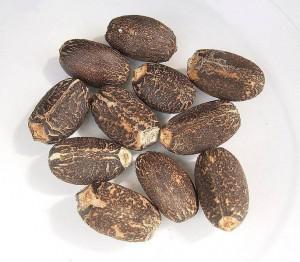 When I wrote my Master’s thesis I recommended Jatropha based biodiesel as a potential solution to the dire need for cheap homegrown energy in Marinduque, Philippines. At the time I was amazed at the promise of the little shrub, and I want to take the opportunity in my first column for 2nd Green Revolution to look back to see if Jatropha has lived up to the hype.
When I wrote my Master’s thesis I recommended Jatropha based biodiesel as a potential solution to the dire need for cheap homegrown energy in Marinduque, Philippines. At the time I was amazed at the promise of the little shrub, and I want to take the opportunity in my first column for 2nd Green Revolution to look back to see if Jatropha has lived up to the hype.
Native to Central America and spread by European colonialism as a fencing crop, Jatropha Curcas is a shrub tree that matures in four to five years to be around six meters tall. The seeds are where the action is — they contain 27- 40% recoverable oil which can be refined into usable diesel fuel. In addition to this high energy density and the relatively simple extraction process, it is Jatropha’s other characteristics which set it apart from the other biofuel feedstocks. First, it requires little water to grow and can grow in soils with higher than average acidity and level of toxins. This allows it to grow in marginal, polluted, or degraded land covers where food crops can’t. Thus the problem of swapping crop land for biofuel cultivation is mitigated. Jatropha’s second little trick is that it’s totally inedible and grazing animals know it. Also, by growing in marginal areas, the roots of the shrub bind the soils thereby limiting soil erosion and desertification.
In the industrialized world Jatropha has grabbed headlines for fueling high-profile flights on both commercial and military aircraft, but the more interesting story has taken place in the developing world. Beginning with Tanzania, Jatropha’s potential has enticed many cash-strapped sub-tropical countries with high energy import bills for diesel including Costa Rica, India, Mali, the Philippines, Ghana, and Myanmar, among others to take notice and pilot Jatropha projects. To encourage this, several governments offer a variety of incentives including generous subsidies, guaranteed government purchases and tax incentives to entice developers and entrepreneurs.
Unfortunately, visions of poverty-reducing, environmentally friendly oil riches flowing from marginal deserts with little water quickly led to unrealistic expectations. Although theoretically economically viable, profitable cultivation of Jatropha in practice has proved a difficult nut to crack.Furthermore, as is often the case in the developing world in any project, land use conflicts and forced labor issues have weakened the initial enthusiasm. Finally, if Jatropha really was able to live up to the hype, it would certainly lead to plantation expansion into both forests and prime cropland in the same way that other biofuels, especially palm oil, have.
So has Jatropha lost her shine? Unfortunately it’s too soon to tell. Both the early unrealistic enthusiasm as well as the failures of early projects should not discourage further development entirely as such phenomenon should be expected with any technological development. Moreover, the fact that the development of Jatropha cultivation has mostly taken place in the difficult economic, social, and environmental conditions inherent in marginal lands in the developing world means that failure of Jatropha as a viable energy crop may not be due to its biology, rather to external conditions. Still, if I had to place a bet on a biofuel feedstock for sustainable development, I’d still bet on Jatropha.
[Image]

